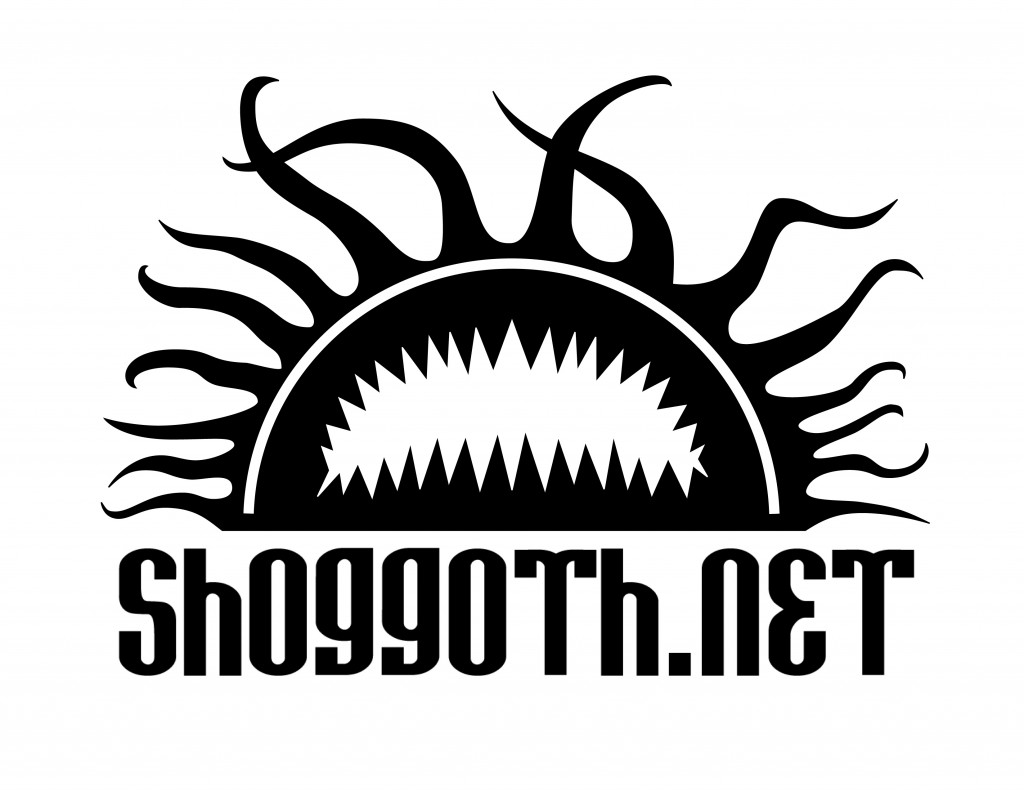Every state has them. They turn up in the news every so often. Nameless people found in pieces. Sometimes dumped in a single container, sometimes spread out over an area. Take a look back further in history and you’ll find they’ve been turning up long before the dawn of the 20th century.
They are spread out over too wide an area, and over too long a timeframe to be the work of just one lunatic. There are too many of them, and they seem too evenly spread to be the result of random homicidal maniacs. So what are they?
Who these poor souls were in life may never come to light, but what they’ve become in death is something that can push investigators to their breaking point.

The Disassemblers
What if I told you there was a cult, or rather a loosely connected group of individuals who had discovered a means to gather power from the act of dismemberment?
The University of Bologna was one of Europe’s first medical schools,founded in 1088. By 1235 a gentleman by the name of Giuseppe De Trocero began teaching there. His teachings and theories on disease and the body were based on the accepted science of the time: the four humours of the body and the theory that disease was caused by an imbalance of them.
Little was known of Giuseppe’s past save that he had travelled extensively in the Middle East studying their medicine before he settled into his teaching position. He was gained notoriety for producing miraculous cures for several sick noble men and women, but then somehow disappeared from all public record in 1243. During his time at the university Giuseppe had written a book titled “Un Trattato Sull’equilibrio all’Interno Del Corpo Umami e Sui Mezzi Con Cui La Vita Puo Essere Estesa,” or a treatise on balance within the human body and the means by which life can be extended. No known copies of this volume survive to this day. It is mentioned positively in some publications assumed to date from roughly the same time period, but it seems that there was some sort of controversy and De Trocero and his theories fell heavily out of favor around the time of his disappearance.
De Trocero had learned several secrets during his travels, and spoken with croaking black things that hid in the shadows of desert caves. He applied his knowledge to the theory of the 4 humours and determined it was possible to extract portions of the life force corresponding to the separate humours. At first his ambition was to use this knowledge to heal, but then it dawned on him that he could use it to prolong his own life. The process involved the dismemberment of a deceased victim, as the humours were thought to live in separate parts of the body, or in certain organs, depending on the desired effect.
The university began to suspect De Trocero after he recovered from an illness, and several disappearances were noted in the surrounding area. He tried to attack the men investigating him and was killed in self defense. His body was used as a dissection cadaver. The university went to great lengths to cover up his disappearance and destroy any copies of his work they could find, but some survived among his closest students.
The surviving copies of De Trocero’s book have been handed down from Doctor to Doctor in secret over the years, leading to a small, loose knit, but global community who calls themselves “The Disassemblers.” Several have managed to cure themselves or ones they love of grievous injuries or illnesses using the methods, and experimentation continues. The group holds an annual conference in a small or mid-sized city, disguising it as a conference for an obscure medical specialty. The aim of these get togethers is to discuss and compare notes on the advancement of their art.
The Disassembled
The process of humour extraction is messy and imprecise. Because of the Mythos magic involved it can also be very dangerous. Most of the time, once extraction is complete, what is left is a dismembered corpse to be disposed of in whatever manner the Doctor sees fit. Occasionally the ritual is performed improperly, or lingering mythos magic takes hold and something entirely different and horrible comes to pass.
The Disassembled are the dismembered remains of a victim of De Trocero’s ritual. The imbalanced humours of their body leave a semi sentient and very angry undead being whose first goal is to reunite all of it’s pieces, then to replace the humours missing in it’s spirit. It usually achieves this by attacking the nearest convenient victim and eating certain organs. There have been instances, however, in which particularly vengeful or intelligent specimens have managed to find and extract vengeance directly on their creators.
Over the decades urban legends have sprung up among mortuary workers about severed limbs and heads reanimating. Usually this is written off as rookie jitters, or perhaps some lingering electrical impulses in dying limbs. If one digs deeper it is possible to find instances that have been explained away as suicides or accidental deaths of morgue workers shortly after one of these John or Jane Doe corpses is recovered.
A disassembled regains it’s new consciousness anywhere between 24-72 hours after the ritual that created it. The sensation of multiple, separate parts all having a shared consciousness is extremely disorienting. If it’s not disturbed by someone witnessing this, it’s first act is to reassemble itself by any means necessary. There have been disassembled who have stapled, nailed, or sewn themselves back together. Once this is complete, the creature goes looking for a victim to steal it’s missing humour from. The creature believes this will allow it to return to a normal life. It will not. After the first victim, the creature finds itself needing more of the missing humour in order to maintain it’s current state.
The latent enchantments keeping most disassembled animated usually break down within a week to two after regaining consciousness. Some specimens have been able to attract cults of personality and keep themselves freshly supplied with victims of their own in order to prolong their existence. These groups are usually found and shut down by local authorities quickly after people start disappearing, but highly mobile or exceptionally hidden ones could keep going for longer.
The Disassembled, Piecemeal Horror Looking to Rebuild Itself.
Char Roll Average
STR ( 3D6X5) 50
CON ( 4D6 X5) 60
SIZ ( 2D6+6 X 5 ) 50
INT ( 2D6+6 X 5) 60
POW ( 5D6 X 5 ) 75
DEX ( 2D6+3 X 5 ) 30
APP ( 1D6+6 ) 45
Average Hit Points: 11
Average Damage Bonus: 0
Average Build: 0
Average Magic Points: 15
Move: 5 if still separated into pieces, 7 if it’s managed to reassemble itself somehow.
Attacks: 3 per round if disassembled ( clawing, kicking and biting by various animated, separate body parts ).
1 per round or weapon if reassembled.
Fighting 40 ( 20/8 ) 1d4 +Db
Dodge 40 ( 20/8 )
Special Attacks: Drain Humour: roll 1D4 when a disassembled is first created to determine it’s missing humour:
1:Phlem
2:Black Bile
3:Yellow Bile
4:Blood
The result determines what the disassembled seeks in a victim. For phlem the disassembled will consume the lymph nodes. For black bile the liver. For yellow bile the gall bladder. For blood the disassembled will drink the victim’s blood like a vampire.
Upon successfully killing a victim and absorbing it’s missing humour, the disassembled gains regeneration, regenerating 1D4 HPs a round. This effect lasts for 1D8 days, after which time more of the Humour is needed.
Skills: Spot Hidden 65%, others it knew in life as determined by the Keeper.
Armor: None, but slashing and piercing attacks cause only 1 point of damage.
Spells: Usually none, but subject to Keeper discretion.
Sanity Loss: 1D4+1 to find the dismembered body, 1D6 to see it animate and attack, or notice a human appearing disassembled is in fact held together with stitches or staples.
“Un Trattato Sull’equilibrio all’Interno Del Corpo Umami e Sui Mezzi Con Cui La Vita Puo Essere Estesa,”
Original in Italian, with English translations as a treatise on balance within the human body and the means by which life can be extended, By Giuseppe De Trocero.
A medieval medical folio describing the four humours of the body, as described by Greek medicine. The text contains information gleaned from vague sources about treating disease, and extending life. The treatments given can be used to create miracle cures for sick individuals, but always at a cost.
Sanity Loss: 1D4
Cthulhu Mythos: +1/+3
Study: 4 weeks
Spells: Extract Humour ( see below).
Extract Humour
Cost: 15 magic points; 1D20 Sanity Points
This spell must be cast on a waning moon on a victim the caster does not know. The spell is cast under the fading light of the moon, and the victim is operated on to extract the needed humour. The victim is awake for this unless steps are taken to anesthetize them.
The caster must make a POW check to cast the spell. Upon a success, the ritual surgery is successful, and the caster is able to capture the essence of the needed humour in a bottle. This is accomplished by removing the corresponding organ as listed above. The victim dies in the process, but must also make a POW check. On an extreme success their sheer will and tenacity interact with the mythos magick and turn them into a disassembled. The caster will not be aware of this at the time, and retains no control over the newly created disassembled.
The extracted humour can be drunk by either the caster or a sick person. It will cure any one disease effecting the drinker completely. If there are no diseases, the effect is to extend the life of the drinker by 1D6 months.
The final effect of the spell renders the victim unidentifiable by any means. Upon viewing the corpse, a close friend or family member will admit that it looks similar to the person they knew, but will not recognize them. This effect is strong enough to stifle even modern means of identification,which will be plagued by system failures and inconclusive results.
Once the ritual is complete, the victim is usually further dismembered and disposed of in an out of the way or forgotten place. For example they might be left on a roadside in a oversized cooler or freezer chest, or spread over a wooded lot. In instances where the victim becomes one of the disassembled this usually leads to more deaths near the area unless the body is recovered and moved.

Christian lives in Rhode Island where all this started. He thinks people are much more terrifying monsters than any nameless thing from the stars. He’s one of the hosts of the DMsAfterDark rpg stream.

